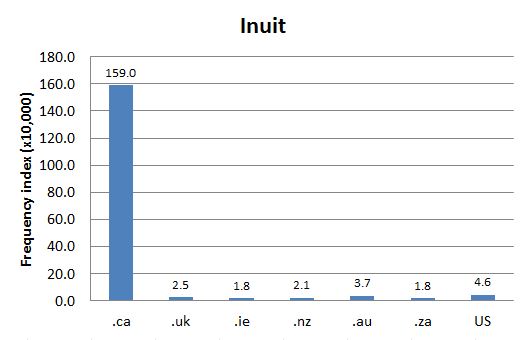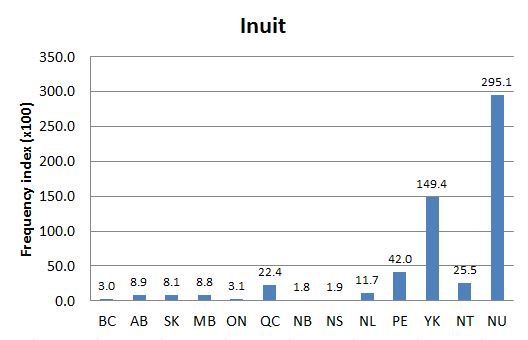DCHP-2
Inuit Innuit, < Inuktitut inuit 'the people' DCHP-2 (October 2016)
1 n. pl. — Aboriginal (Inuit)
any of several Aboriginal peoples inhabiting the Arctic regions of Canada.
Type: 5. Frequency — Inuit, the plural form of Inuk 'man', is an Inuktitut word meaning 'the people', and is used in Canadian English to refer to the Aboriginal peoples of Canada's Arctic. It may also more generally include the Iñupiat people of Alaska and the Kalaallit people of Greenland (see Alaska Native Language Center reference). Section 35 (2) of Canada's Constitution Act of 1982 lists Inuit as a separate group from Métis or First Nations (see Justice Laws Canada reference). Because Eskimo, 'raw meat eater', is a term assigned to the Inuit by the colonizers and carries negative connotations in Canada, Inuit became the replacement term after the Inuit Circumpolar Conference of 1977 (see the 2013 quotation), though the term had been in occasional use before. While Inuit is the preferred term in Canada (see Chart 1), Eskimo is still currently used in American English because Inuit as an umbrella term does not include the Yupik people of Alaska. According to the 2006 Canadian census (see Inuit Tapiriit Kanatami reference), almost half of Canada's Inuit population resides in the territory of Nunavut, which is reflected in the regional frequency of the term (see Chart 2).
See also Gage-3, s.v. "Inuit", which is marked "Cdn.".See also: Eskimo Indian (meaning 1a) Inuk Métis First Nation First Peoples (First People) throat singing qulliq Native Canadian (meaning 1) Aboriginal Aboriginal language
- Note the gap in the use of the word between the 1902 and the 1978 quotations, during which period Eskimo dominated the discourse.
2 adj. — Aboriginal (Inuit)
of or relating to the Inuit people or their culture.
Type: 4. Culturally Significant — See meaning 1.3 n. — Aboriginal (Inuit)
the language of the Inuit or the larger language family of Inuit languages.
Type: 1. Origin — Inuit is part of the Eskimo branch of the Eskimo-Aleut language family, along with the Yupik languages spoken in parts of Alaska and Siberia. Campbell (2000: 109) notes that Inuit is a dialect continuum of four main regions, two of which are in Canada. Inuinnaqtun, a dialect of Inuvialuktun, and Inuktitut are some of the primary dialects of these Canadian areas and are recognized as official languages in both the Northwest Territories and Nunavut (see Spectacular Northwest Territories and Nunavut Tourism references).
Today the Inuit language that is most familiar to the Canadian public is Inuktitut. Note that some statements from earlier periods (e.g. the 1877 quotation) are erroneous.See also: Inuktitut
References:
- Alaska Native Language Center "Inuit or Eskimo?" Accessed 1 May 2014
- Campbell (2000)
- Gage-3
- Inuit Tapiriit Kanatami "Inuit Population" Accessed 1 May 2014
- Justice Laws Canada "Constitution Act, 1982" Accessed 1 May 2014
- Nunavut Tourism "Welcome to Nunavut: Mother Tongue" Accessed 26 Apr. 2016
- Spectacular Northwest Territories "People: Languages" Accessed 26 Apr. 2016
Images:
Chart 1: Internet Domain Search, 1 May 2014
Chart 2: Regional Domain Search, 1 May 2014

